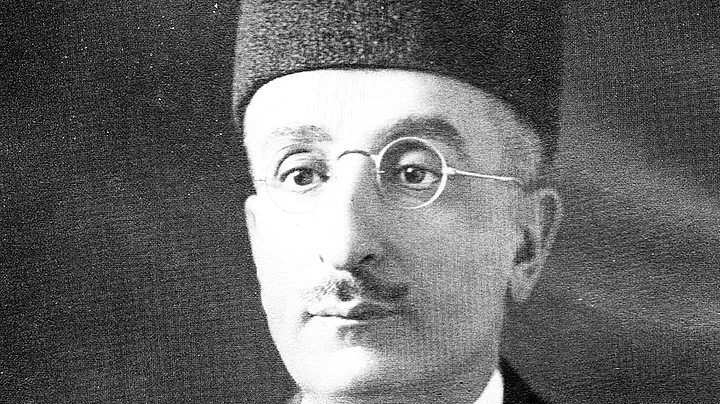Protests and clashes broke out last year, and two people died, during the celebrations of birth anniversary of Tipu Sultan, the 18th century Muslim ruler of Mysuru. This did not deter the Congress government from holding a similar event this year. The government has, in fact, decided to make the celebrations an annual affair.
While many call it a 'needless spectacle', a 'minority vote bank gimmick' and a 'dangerous trend', historians like Ramachandra Guha believe the government should not celebrate jayanti of any king or emperor from history.
It’s anachronistic, anti-democratic for a republican democratic state to celebrate kings, queens, emperors. Official celebration of a monarch by any government is anachronistic.Historian Ramachandra Guha in an interview
Every year when swords are out on Tipu Sultan's jayanti, questioning his ‘divisive ways’ and calling him a tyrant, the name of Sir Mirza Ismail emerges with equal force. There are many who believe he can be a better icon for Karnataka, if at all the government needs symbolism.
Sir Mirza Ismail: A Forgotten Bangalorean
Born in a Shia Muslim family of Persian descent in Bengaluru, Mirza Ismail entered the service of Mysore state in 1905. He started off as an Assistant Superintendent of Police, and soon become private secretary to the Maharajah. Gauging his administrative skills and vision for the state, Maharaja appointed the 42-year-old Mirza as Dewan (Prime Minister) in the year 1926.
Not much is documented or written about Mirza Ismail, except his autobiography and the newspaper reports of the time, detailing how he governed the state.
Mirza was instrumental in starting 25 different industries in Karnataka, the then Mysore. He established Hindustan Aeronautics and promoted silk and sandalwood industries. He revived sugar factories at Mandya, the porcelain and glass factories, and converted Bhadravati Iron factory into a steel factory. These were integral in transforming Mysore into an industrial power.
Mirza Ismail’s services to the Sanskrit College at Mysore are unforgettable. Recognising his zeal for Sanskrit, the Sringeri Mutt “imputed him to be a Brahmin in his previous birth.”
In times when electricity was a luxury and commodity of privilege, Mirza Ismail launched a scheme of electrification of villages. By 1940, nearly 180 villages were supplied with power in Mysore. It was the first rural electrification programme in India.
Tipu Sultan Vs Mirza Ismail
His tenure as a Dewan ran through tumultuous times, including labour agitations, Hindu-Muslim clashes which took place in Bengaluru in July 1928, rift between the British and the princely states, and an independence movement at its peak.
Both Tipu Sultan and Mirza Ismail took Mysore to new heights with their unique capabilities. Both believed in social welfare, administrative reforms and the concept of nation-state, but Mirza Ismail achieved equal or more with his democratic ethos, diplomatic skills and vision despite being much less in power than Tipu Sultan.Professor B Sheik Ali, prominent historian from Mysore
A friend and follower of Gandhi, Mirza treated the interest of the 'ordinary' as supreme. His style of governance was participatory and sustainable.
Tipu was harsh in his attitude towards people who wanted to overthrow his power or oppose him. Mirza had opposition from Indian National Congress, but he made conciliations. He approached Gandhi to do so. The technique and methods adopted by Tipu Sultan and Mirza Ismail were different. Mirza was very liberal, humane, far-sighted and wise. He was a visionary who was tactful and diplomatic. Tipu was harsh and arrogant.Professor B Sheik Ali
A Firm Believer in Partnerships
Mirza Ismail went on to become the Dewan of Jaipur and Hyderabad after resigning from his post in Mysore. He brought administrative reforms, initiated small scale industries, scrutinised heavy investment projects and invested in beautification of public spaces.
Historian Ram Chandra Guha is one of few people who have written about Mirza Ismail. He reveals how Mirza talked about the partnership between Aligarh Muslim University and Benares Hindu University.
Mirza Ismail thought a closer alliance between BHU and AMU could be a prelude to a deeper rapprochement between currently warring groups. He believed that in all universities, ‘every graduate, every true alumnus, should seek to exercise the right and privilege of an emissary of reconciliation among all the peoples of India’.Ramachandra Guha in his writings on Mirza Ismail
During World War II, when Gandhi and Congress leaders were in jail and Jinnah and the Muslim League made rapid strides, communal polarisation was growing. In this trying time, Mirza addressed the convocation of the Benares Hindu University in 1945. He said:
The more deeply one understands and feels the vital truths of one’s own religion, the more responsive one is to the religion of others. Having absolutely forgotten religion, and being moved only by narrow and mistaken ideas of communal self-interest, our communities are everywhere engaged in hostilities which degrade our religious names.Mirza Ismail, as quoted by Ramachandra Guha
Mirza Ismail represented the south Indian states at the first session of the Indian Round Table Conference in London. He was spokesman for the States of Jaipur and Jodhpur (now part of Rajasthan), in the second conference. He will be remembered for his views on how 'Indian India' is distinct from the 'British India' of pre-partition days.
Despite several requests by Raja Hari Singh to join him in governing the state of Jammu and Kashmir, he settled for a peaceful old age and spent his last days in Bengaluru. He died on 5 January 1959.
Tipu Sultan has been an icon. The folklores and popular literature has viewed him as a brave martyr who fought the British. He fought for the sovereignty of Mysore, because the idea of India did not exist then. But as George Orwell said, history is written by the winners, and Tipu's legacy and what he actually did is controversial and subject to debate.
What is established though is the idea of democracy and the essence of celebrating everyday heroes.
